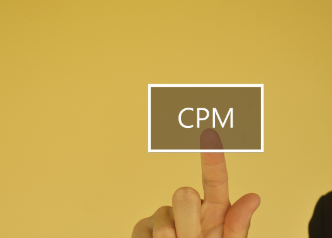CPM advertising, a widely-used model in the digital marketing realm, involves advertisers paying for their ad based on every thousand views it receives. This approach is highly effective when promoting brand awareness initiatives and maximizing return on investment (ROI) relies heavily upon selecting quality CPM networks. In this article, we will delve into some of the prime CPM network options to further enhance your overall marketing strategy.
Key Factors to Consider When Choosing a CPM Ad Network
Choosing the best CPM ad networks involves considering several key factors:
Audience Reach
The pivotal elements to consider when choosing a CPM ad network are the audience’s reach and relevance.
- Size of Audience: Assess the monthly count of distinct visitors or impressions that can be delivered by the network. While larger networks may provide wider coverage, specialized networks have potential to cater to more focused and specific audiences.
- Demographic Targeting: Evaluate if the network permits accurate and specific targeting according to factors such as age, gender, location, and interests. This function ensures that your advertisements reach the suitable audience group.
- Vertical Focus: Specialized networks catering to specific industries or niches can boost ad relevance and engagement, especially if they align with your target market.
Ad Formats
Engagement and campaign effectiveness are significantly boosted by the wide range of ad formats available, allowing for ample customization options.
- Display Ads: Fundamental for brand visibility and awareness, a variety of standard banners can be found in different sizes and placements throughout the network of websites.
- Video Ads: Assess the extent to which pre-roll, mid-roll, or post-roll video ad placements are accessible across the network. These types of ads usually result in greater engagement and can effectively communicate your message.
- Native Ads: Search for networks that provide native advertising possibilities, in which advertisements seamlessly integrate with the host site’s content. Native ads are more effective as they appear less invasive and seem more pertinent to the audience.
- Interactive Ads: When looking into advertising networks, it is beneficial to consider those that offer interactive ad formats such as quizzes, polls or games. These options promote user engagement and interaction which can ultimately result in better conversion rates.
Reporting and Analytics
Optimizing ad campaigns and measuring their impact necessitate the use of comprehensive tracking and analytics tools.
- Real-time Reporting: Real-time data access for impressions, clicks, conversions and revenue enables timely adjustments and optimizations to the campaign.
- Customizable Dashboards: Assess if the network offers tailor-made dashboards that enable you to keep track of essential performance indicators (KPIs) related to your campaign objectives. The ability to customize allows for a targeted approach towards metrics that have a direct influence on achieving your goals.
- Attribution Models: Search for networks that provide sophisticated attribution models to precisely monitor conversions across various touchpoints. Acquiring knowledge about the customer journey can enhance targeting and boost campaign efficacy.
Cost Efficiency
It is essential to strike a balance between cost efficiency and performance in order to optimize return on investment (ROI).
- CPM Rates: Assess the CPM rates provided by various networks. Opting for lower CPM rates can help make your advertising budget go farther, however it’s critical to verify that they are in line with your campaign goals and desired target audience quality.
- Budget Flexibility: Evaluate the network’s ability to facilitate adaptable budget management by offering options such as setting daily or campaign-level budgets. This level of flexibility empowers you to modify your expenses based on current market conditions and real-time performance data.
- ROI Optimization: Search for networks that offer resources or insights to enhance ROI optimization. This could involve suggestions derived from campaign performance data, or predictive analytics utilized to fine-tune targeting and creative strategies.
Top 5 Best CPM Ad Networks

Maximizing reach and engagement relies heavily on selecting the appropriate CPM (Cost Per Mille) ad network. Hence, we delve into the leading five ad networks recognized for their varied capabilities and potent targeting tactics:
Google Display Network (GDN)
The Google Display Network (GDN) is highly acclaimed for its vast outreach spanning millions of websites, YouTube videos and apps within the Google ecosystem. It encompasses a range of ad formats such as text, image, video and interactive ads to suit different campaign goals. GDN’s unparalleled targeting features empower advertisers with precise audience selection based on demographics, interests and remarketing criteria.
- Average CPM: $2.80
- Features: Extensive reach, diverse ad formats, superior targeting options.
- Best For: Businesses seeking extensive reach with detailed targeting.
Facebook Audience Network
By enabling ads on numerous external apps and websites, the Facebook Audience Network expands the scope of Facebook advertisements. It permits marketers to connect with a broader social media audience outside of just Facebook while elevating interaction through native, banner, and interstitial ad types. This network is particularly advantageous for businesses striving to strengthen their online presence by engaging with users across multiple mobile applications and sites.
- Average CPM: $5.00
- Features: Access to a vast social media audience, high engagement formats.
- Best For: Brands aiming for engagement and social presence.
AdRoll
AdRoll’s expertise lies in retargeting tactics that help e-commerce sites reconnect with potential customers who have displayed interest but haven’t yet made a purchase. With its cross-platform ad placements, across mobile devices, social media channels and websites, AdRoll ensures your brand receives constant exposure while maximizing conversion rates. The company also features dynamic ads and advanced segmentation tools that allow for customized messaging based on user behavior as well as preferences.
- Average CPM: $4.00
- Features: Retargeting capabilities, cross-platform ad placement.
- Best For: E-commerce platforms looking to recapture visitor interest.
Index Exchange
The main purpose of Index Exchange is to run an open and real-time auction platform, enabling publishers and advertisers to trade digital ad inventory with ease. It boasts a high-end market for top-notch ads placements along with comprehensive metrics reporting that assures full transparency over the entire process- right from bidding till placement. This interface comes in handy especially when marketers or content creators lookout for equitable bidder environment, aimed at maximizing ROI attainable through tactical ad positioning strategies.
- Average CPM: $1.10
- Features: Real-time bidding, transparency, premium marketplace.
- Best For: Publishers and advertisers preferring a transparent bidding environment.
Media.net
Media.net specializes in contextual advertising, matching ads to relevant content based on keywords and user intent. It boasts a strong mobile presence and partners with exclusive publishers, providing advertisers access to premium ad placements. Media.net’s focus on contextual relevance enhances ad engagement and effectiveness, making it a preferred choice for advertisers looking to target specific audiences based on content relevance.
- Average CPM: $1.00
- Features: Contextual ads, strong mobile presence, exclusive publisher network.
- Best For: Advertisers focused on contextual relevance.
Emerging Trends in CPM Advertising
The landscape of CPM advertising is constantly evolving. Here are some current trends:
Increased Focus on Mobile
Mobile advertising continues to shape the CPM landscape, driven by the pervasive use of smartphones and tablets:
- Mobile-First Strategies: Advertisers are increasingly prioritizing mobile platforms to reach consumers who spend more time on mobile devices than on desktops. This shift reflects the need for ads that are optimized for smaller screens and touch interactions.
- Responsive Ad Formats: Ad networks are emphasizing responsive ad formats that automatically adjust to different screen sizes and orientations. This approach ensures that ads maintain their effectiveness and visual appeal across various mobile devices.
- App Advertising: With the popularity of mobile apps soaring, advertisers are leveraging in-app advertising opportunities. These placements allow for targeted ads that align closely with users’ interests and behaviors within specific app environments.
Programmatic Advertising
Automation and data-driven strategies are revolutionizing the efficiency and effectiveness of CPM advertising:
- Efficiency in Ad Buying: Programmatic advertising technologies streamline the buying and selling of ad inventory through automated processes. This automation not only reduces manual workload but also enables advertisers to execute campaigns more efficiently and at scale.
- Advanced Targeting Capabilities: Leveraging machine learning and AI algorithms, ad networks can deliver highly targeted ads based on user data such as demographics, browsing behavior, and purchase intent. This level of precision improves ad relevance and increases the likelihood of engagement and conversion.
- Real-Time Bidding (RTB): RTB allows advertisers to bid on ad impressions in real time, optimizing ad placement based on factors like audience behavior and campaign objectives. This dynamic bidding process ensures that advertisers achieve the best possible ROI by adjusting bids instantaneously.
Privacy and Data Security
In an era of heightened privacy concerns and regulatory scrutiny, maintaining trust and compliance is critical for ad networks:
- Regulatory Compliance: Ad networks are adhering to stringent data protection regulations such as GDPR (General Data Protection Regulation) and CCPA (California Consumer Privacy Act). Compliance involves implementing robust data privacy policies, obtaining user consent for data processing, and providing transparency regarding data usage practices.
- Data Anonymization: To safeguard user identities and comply with privacy laws, ad networks are anonymizing or pseudonymizing personal data. This anonymization process ensures that data cannot be traced back to individual users without additional information, thereby protecting user privacy.
- Transparency and Consent Management: Ad networks are enhancing transparency by providing clear explanations of how user data is collected, used, and shared. They also offer users greater control over their data through consent management tools, allowing individuals to manage their preferences regarding data processing activities.
How to Maximize Your ROI with CPM Advertising

To ensure you’re getting the most out of your investment in CPM advertising, consider these tips:
Target Precisely
Effective targeting is crucial for maximizing the impact of your CPM advertising campaigns:
- Advanced Targeting Options: Take advantage of advanced targeting capabilities offered by CPM ad networks. These options include demographic targeting (age, gender, income levels), psychographic targeting (interests, values, attitudes), and behavioral targeting (online activities, purchase behaviors).
- Custom Audience Segmentation: Segment your audience based on specific criteria relevant to your campaign objectives. This segmentation allows you to tailor your messaging and creatives to resonate with each audience segment effectively.
- Geotargeting: Utilize geotargeting to reach users based on their geographical location. This strategy is particularly valuable for local businesses aiming to connect with audiences in specific regions or cities.
- Contextual Targeting: Target users based on the context of the content they are consuming. This method ensures that your ads appear alongside relevant content, increasing relevance and engagement.
Test and Optimize
Continuous testing and optimization are key to improving ad performance and maximizing ROI:
- A/B Testing: Conduct A/B tests to compare different ad variations. Test elements such as headlines, images, CTAs, and even ad formats to identify which combinations drive the highest engagement and conversions.
- Ad Placement Testing: Experiment with different placements across various websites or sections of websites. Monitor performance metrics to determine which placements generate the best results in terms of visibility and user interaction.
- Campaign Timing and Frequency: Test different times of day, days of the week, or seasons for running your campaigns. Optimize ad delivery schedules to coincide with peak times when your target audience is most active and receptive.
- Creative Refresh: Regularly update your ad creatives to prevent ad fatigue and maintain audience interest. Refreshing creatives with new visuals, messaging angles, or seasonal themes can reinvigorate campaign performance.
Monitor Metrics
Tracking and analyzing key metrics provide insights into campaign effectiveness and help in making informed decisions:
- Viewability: Measure the percentage of ad impressions that are viewable to users. Aim for high viewability rates to ensure that your ads have the opportunity to make an impact.
- Engagement Rates: Monitor metrics such as click-through rates (CTR), interaction rates (e.g., video plays, expansions), and dwell time to gauge user engagement with your ads. Higher engagement rates indicate effective ad content and targeting.
- Conversion Rates: Track the rate at which users complete desired actions, such as making a purchase, signing up for a service, or downloading an app. Analyzing conversion rates helps in optimizing campaigns for maximum ROI.
- ROI Analysis: Calculate return on investment (ROI) by comparing campaign costs to the revenue generated or other defined conversion goals. ROI analysis provides a clear understanding of campaign profitability and informs budget allocation decisions.
Challenges in CPM Advertising

While CPM advertising offers numerous benefits, there are challenges:
Ad Visibility
Achieving and maintaining high ad visibility is a persistent challenge in CPM advertising, influenced by several factors:
- Digital Competition: In today’s digital landscape, numerous websites, social media platforms, and apps vie for users’ attention. This saturation makes it challenging for ads to stand out and capture audience interest effectively.
- Viewability Metrics: Advertisers face the dilemma of ensuring that their ads are not only served but also viewed by users. Viewability metrics, which measure the percentage of ad impressions that are actually visible to users, provide insights into ad performance. Low viewability rates can indicate ineffective placements or ad formats.
- Creative Optimization: Effective ad design is critical for enhancing visibility. Ads must be visually appealing, informative, and contextually relevant to the audience. A/B testing different creative elements such as imagery, copy, and calls-to-action (CTAs) helps identify which variations maximize engagement and visibility.
- Strategic Placement: Choosing the right placement for ads can significantly impact visibility. Advertisers should consider placements that align with their target audience’s online behavior and preferences, ensuring ads are seen in high-traffic areas of websites or within content relevant to their interests.
Ad Blocking
The widespread adoption of ad blockers presents a significant challenge to traditional CPM advertising methods:
- Impact on Reach: Ad blockers prevent ads from displaying to users who have installed these browser extensions or software. This reduces the reach and potential effectiveness of ad campaigns, particularly among tech-savvy and privacy-conscious demographics.
- Native Advertising: To circumvent ad blockers, advertisers are increasingly turning to native advertising formats that blend seamlessly with the surrounding content. Native ads are less intrusive and more likely to be perceived as valuable content, thus overcoming ad blocking barriers.
- User Education and Consent: Some advertisers engage in educational campaigns to inform users about the implications of ad blocking on content creators and the free web ecosystem. Encouraging users to whitelist trusted sites or opt into ad-supported content can mitigate the impact of ad blockers.
Changing Regulations
Adapting to evolving data privacy laws and regulations poses complexities for CPM advertisers:
- GDPR and CCPA Compliance: The General Data Protection Regulation (GDPR) in Europe and the California Consumer Privacy Act (CCPA) in the United States impose stringent requirements on data collection, processing, and user consent. Advertisers must implement robust compliance measures to avoid legal repercussions and maintain consumer trust.
- Impact on Targeting and Tracking: Regulatory changes may restrict the use of cookies and other tracking technologies essential for targeting and measuring ad performance. Advertisers must adopt alternative targeting methods, such as contextual advertising or first-party data strategies, to comply with regulations while delivering personalized ad experiences.
- Global Compliance Challenges: Operating in multiple jurisdictions with varying data protection laws complicates campaign execution for global advertisers. Developing region-specific compliance strategies and partnering with legal experts are essential steps to navigate regulatory complexities effectively.
Conclusion
Identifying the best CPM ad networks requires understanding your marketing goals and matching them with the right network characteristics. By leveraging the strengths of the top networks and staying informed about the latest trends, advertisers can effectively manage their CPM campaigns for optimal performance and impact.
FAQ
Generally, a CPM rate between $1.00 and $3.00 is considered cost-effective, though this can vary by industry and ad network.
Focus on high-quality, engaging ad content and optimize for better targeting and placement.
Not necessarily. Higher CPM rates imply more competition for placement, but not always better ROI.



